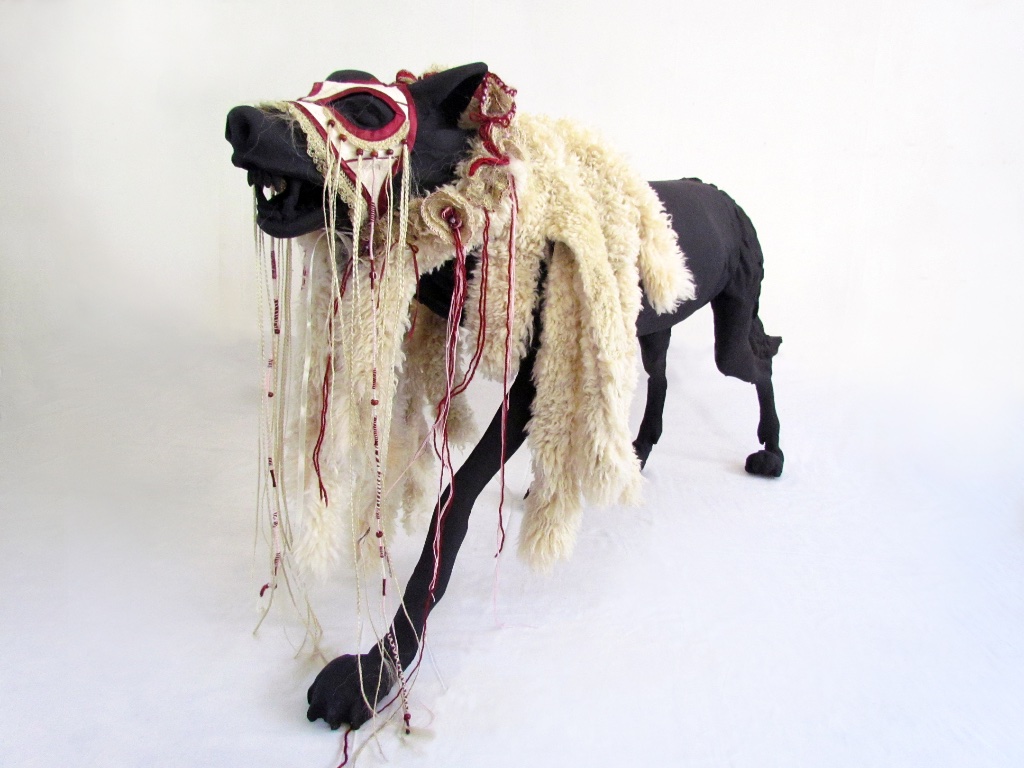
One of my favorite places in the Paris region is the Domaine de Chamarande. It’s easy to reach by train from Paris (41 minutes, with frequent departures), and it’s only a five-minute walk from the station when you get there. Quality art exhibitions are held in the beautiful château and the Orangerie, and permanent artworks are scattered around the large park, with its lake and ancient trees. On top of all that, everything is free.
Lest we forget that humans are part of the animal kingdom, the current exhibition in the château is called “Devenir (un Autre) Animal.”
The group show, featuring the work of eight artists and one collective, each presented in its own room of the château, begins with a focus on an animal with close relations to humans, the wolf, whose threatening figure is omnipresent in our legends and popular literature and which inspires so much fear that it has been hunted nearly to extinction in many countries, including France, in the past but is also the progenitor of our beloved doggy pets.
“I Am a She-Wolf” (2012), an installation by Katia Bourdarel, whose work is often based on fairy tales, consists of five resin sculptures of a pack of wolves in different poses: one is snarling, one is crouched as if about to attack, one is howling and so on. Their menacing aspect is paradoxically accentuated by the fact that each wears a colorful embroidered mask (called a “loup,” or “wolf,” in French) extended with frills and furs (is that a wolf in sheep’s clothing in the photo at the top of this page?). The artist sees the she-wolf as a symbol of a strong woman (like the mother of Apollo and Artemis, the wet nurse of Romulus and Remus, etc.), and describes the installation’s title as “a quasi-warlike declaration.”
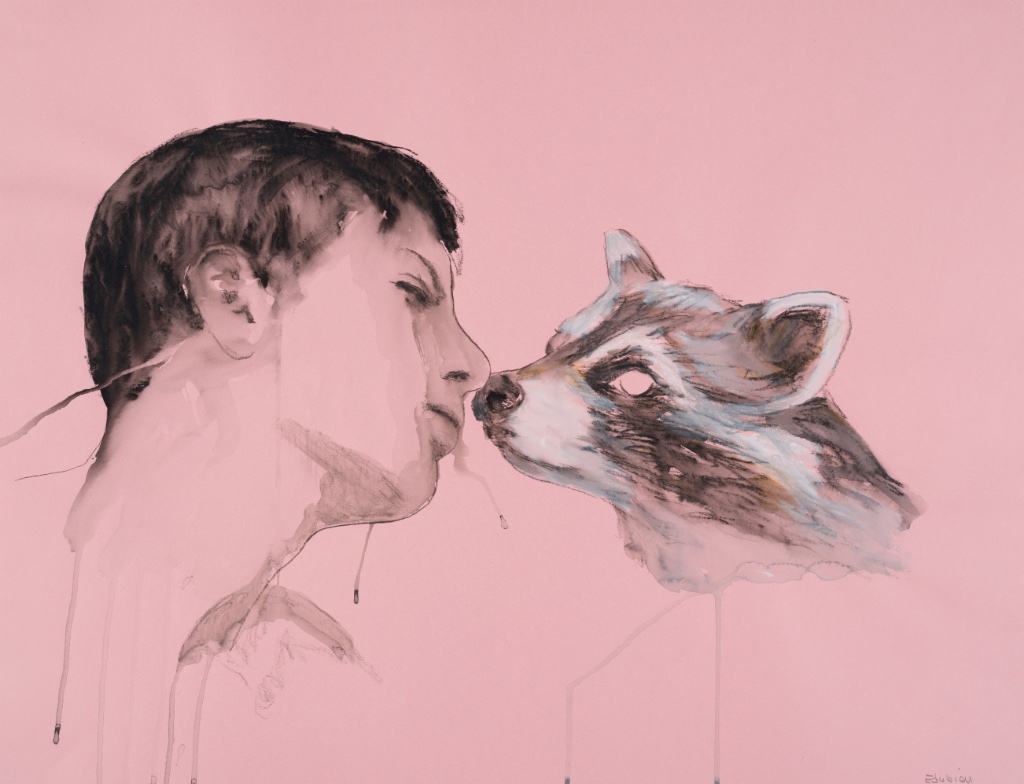
In Edi Dubien’s installation “Becoming Another Animal (Cocoon)” (2019-22), the artist has papered the walls with drawings of children and teenagers in close encounters of the strange kind with animals. A couple of sculptures, including a cocoon with a human face hanging from a tree branch and suit jackets with animal heads growing out of them raise questions about our animal within.
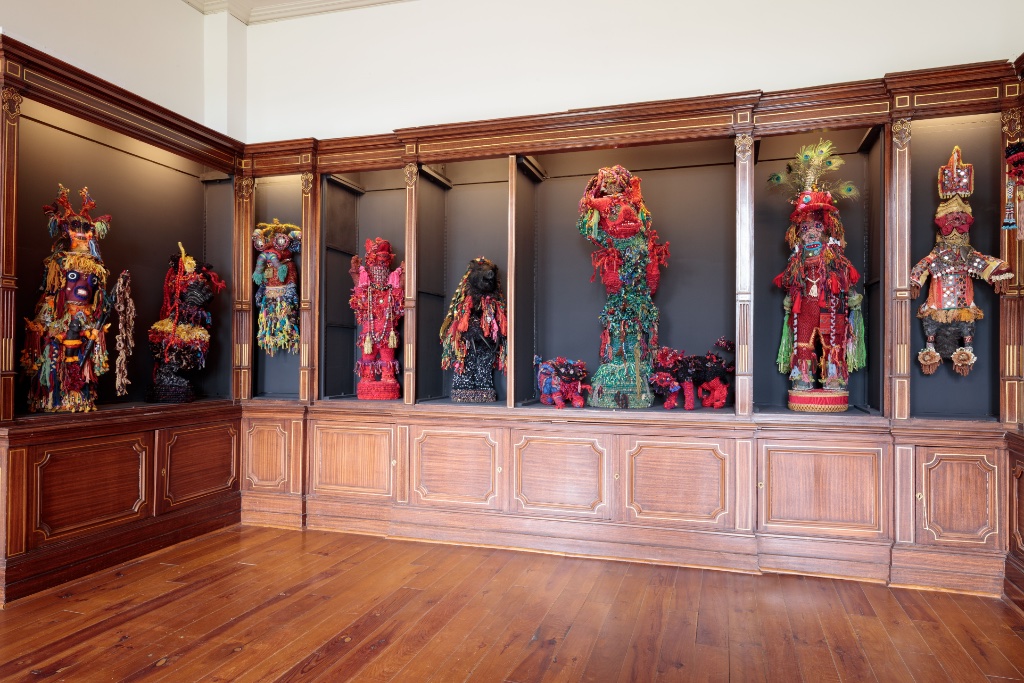
In the library is a spectacular installation by Benoit Huot, “Peuples Incertains” (2015-21). The artist has clothed taxidermy animals in extravagant embroidered and beaded costumes, giving new life and shamanic force to these dead creatures. Click here for a closer look at these amazing works.
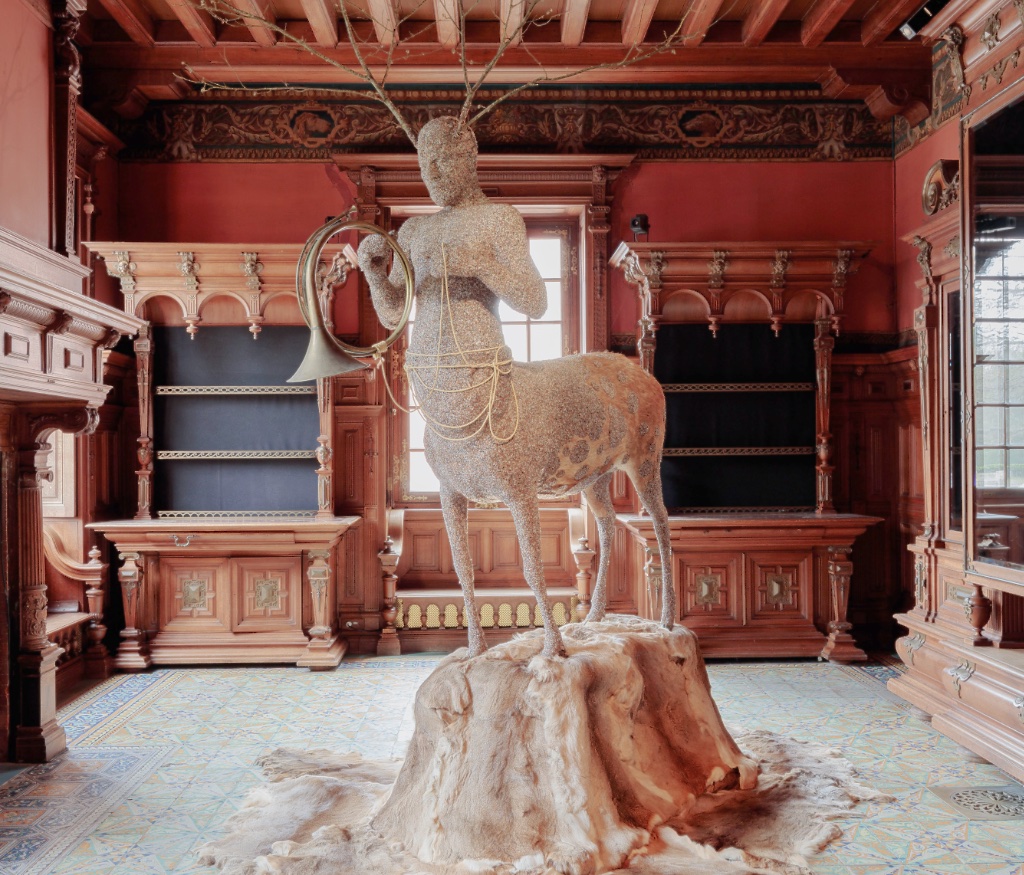
Another standout is Julien Salaud’s “Printemps (Cerfaure)” (2014), presented in the château’s dining room, with its elaborate woodwork. Sending proudly in the middle of the room is a monumental sculpture of a stag’s body with a man’s upper body and head, in other words, a hunter and his prey melded into one. The man holds a hunting horn and has tree branches rather than a stag’s horns growing out of his head. Says Salaud of this oxymoronic combination of hunter and hunted: “Thinking about hunting led me to think about perversion. I have encountered it in my life: in work situations, in family, in friendship and especially in love relationships. I myself have been an active participant, both executioner and savior.”
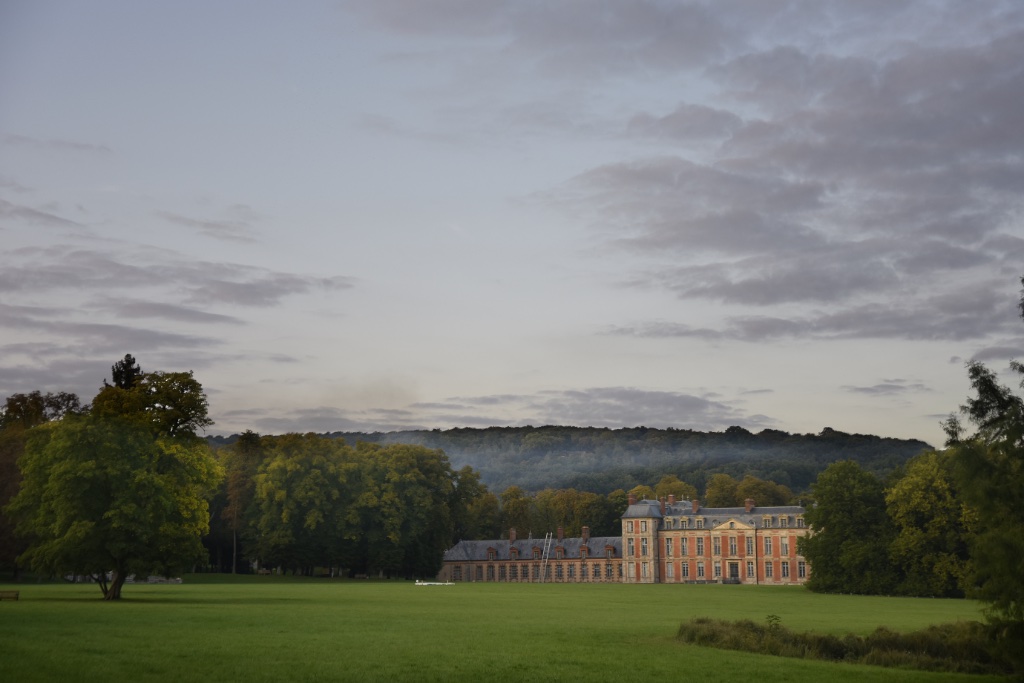
This exhibition will definitely get you thinking not only about the animal within but also the fragility of life and the possibility of immortality. The château’s park is the perfect place to meditate on these big questions or perhaps just take a break from them.
Favorite
Such a lovely review!
Thank you!